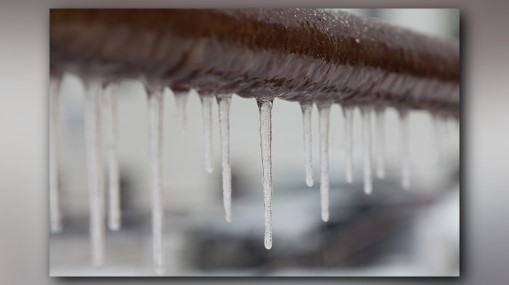Avoiding Frozen Plumbing in Winter: Critical Advice
Avoiding Frozen Plumbing in Winter: Critical Advice
Blog Article
Listed here underneath you can discover more incredibly good expertise concerning How to prepare your home plumbing for winter weather.

Cold weather can damage your plumbing, particularly by freezing pipes. Here's just how to avoid it from happening and what to do if it does.
Introduction
As temperatures decrease, the risk of frozen pipelines increases, possibly leading to pricey repair work and water damages. Comprehending exactly how to prevent frozen pipelines is crucial for property owners in cool climates.
Prevention Tips
Protecting susceptible pipes
Wrap pipes in insulation sleeves or make use of warm tape to shield them from freezing temperatures. Concentrate on pipes in unheated or outside locations of the home.
Heating methods
Maintain indoor spaces sufficiently heated up, especially locations with pipes. Open cabinet doors to enable cozy air to circulate around pipes under sinks.
Just how to determine icy pipelines
Look for reduced water flow from taps, unusual odors or noises from pipes, and noticeable frost on revealed pipelines.
Long-Term Solutions
Structural modifications
Think about rerouting pipes away from exterior wall surfaces or unheated locations. Include additional insulation to attics, basements, and crawl spaces.
Updating insulation
Purchase high-grade insulation for pipelines, attics, and walls. Appropriate insulation helps keep regular temperatures and minimizes the danger of frozen pipes.
Shielding Exterior Pipes
Yard tubes and outside taps
Detach and drain yard tubes before winter season. Mount frost-proof faucets or cover exterior taps with insulated caps.
Comprehending Frozen Pipes
What triggers pipes to freeze?
Pipes ice up when exposed to temperature levels below 32 ° F (0 ° C) for extended durations. As water inside the pipes freezes, it increases, taxing the pipe wall surfaces and potentially creating them to rupture.
Threats and damages
Icy pipes can bring about water system disruptions, residential or commercial property damages, and pricey repair work. Ruptured pipelines can flood homes and cause substantial architectural damages.
Signs of Frozen Pipes
Identifying icy pipes early can prevent them from bursting.
What to Do If Your Pipes Freeze
Immediate activities to take
If you presume icy pipelines, keep faucets available to eliminate pressure as the ice thaws. Utilize a hairdryer or towels taken in warm water to thaw pipelines slowly.
Conclusion
Protecting against frozen pipelines needs positive actions and fast feedbacks. By comprehending the reasons, signs, and safety nets, house owners can safeguard their pipes during cold weather.
6 Proven Ways to Prevent Frozen Pipes and Protect Your Home
Disconnect and Drain Garden Hoses
Before winter arrives, start by disconnecting your garden hoses and draining any remaining water. Close the shut-off valves that supply outdoor hose bibs and leave the outdoor faucet open to allow any residual water to drain. For extra protection, consider using faucet covers throughout the colder months. It’s also important to drain water from any sprinkler supply lines following the manufacturer’s directions.
Insulate Exposed Pipes
Insulating your pipes is an effective way to prevent freezing. Pipe insulation is readily available at home improvement stores and is relatively inexpensive. Pay close attention to pipes in unheated areas such as the attic, basement, crawl spaces, or garage. Apply foam insulation generously to create a buffer against the cold. You can also wrap your pipes in heat tape or thermostat-controlled heat cables for added warmth.
Seal Air Leaks
Inspect your home for any cracks or openings that could let in cold air. Seal any holes around the piping in interior or exterior walls, as well as the sill plates where your home rests on its foundation. Additionally, make sure to keep your garage door closed unless you’re entering or exiting. Leaving it open creates a significant air leak that can lead to frozen pipes.
Allow Warm Air Circulation
During cold snaps, it’s essential to allow warm air to circulate evenly throughout your home. Leave interior doors ajar to promote better airflow. Open kitchen and bathroom cabinets to help distribute heat consistently around the rooms. If you have small children or pets, be sure to remove any household chemicals or potentially harmful cleaners from open cabinets for safety.
Let Faucets Drip
A small trickle of water can make a big difference in preventing ice formation inside your pipes. When temperatures drop significantly, start a drip of water from all faucets served by exposed pipes. This continuous flow helps prevent the water from freezing. Additionally, running a few faucets slightly can relieve pressure inside the pipes, reducing the chances of a rupture if the water inside does freeze.
https://choateshvac.com/6-proven-ways-to-prevent-frozen-pipes-and-protect-your-home/

We were introduced to that write-up on Prevent Frozen Pipes through a good friend on our other web address. Sharing is good. One never knows, you might be helping someone out. Many thanks for your time. Please stop by our website back soon.
Information Report this page